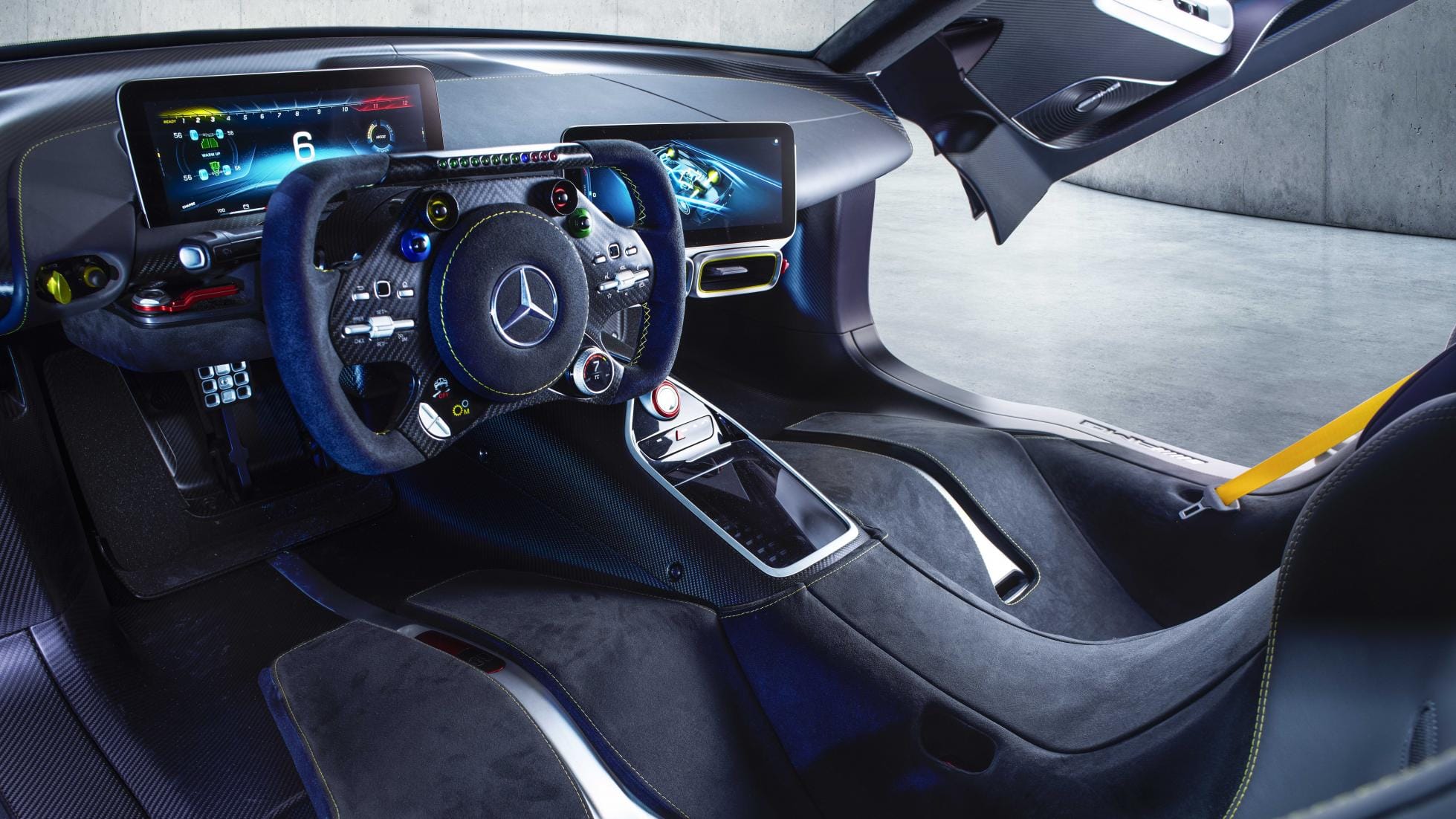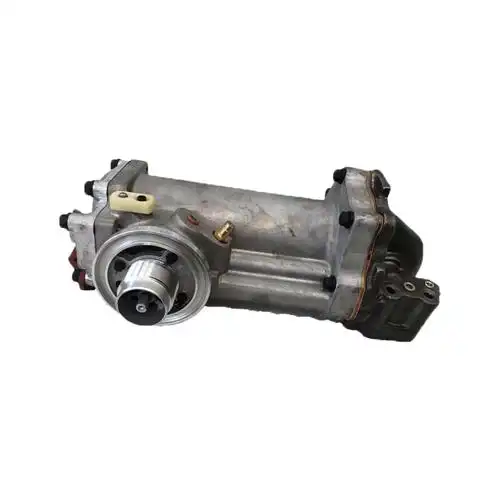When discussing automotive engineering marvels, thermal efficiency stands as a critical benchmark. It measures how effectively an engine converts fuel energy into mechanical power. Based on expert discussions and verified claims, here’s a breakdown of the most thermally efficient gas engines ever fitted into production cars.
Breaking Down Thermal Efficiency: Best Gas Engines in Production Cars
1. Mercedes-AMG One’s F1-Derived Power Unit: ~40% Efficiency
The Mercedes-AMG One reigns supreme with a thermal efficiency of approximately 40%, derived from Formula 1 technology. Key features include:
- Pre-combustion chamber ignition for optimized fuel burn.
- High-revving, turbocharged 1.6L V6 hybrid architecture.
- Designed for peak efficiency under extreme loads, a hallmark of F1 engineering.
While not a mass-market engine, its hybrid-assisted design sets a benchmark for performance-oriented efficiency.
The Mercedes-AMG One stands as an engineering marvel, with a 40% thermal efficiency derived from Formula 1 technology, a testament to the extreme precision of modern motorsport. The heart of this hypercar is a hybrid-assisted 1.6L V6 turbocharged engine, coupled with a high-performance electric motor, providing both efficiency and mind-blowing acceleration. The engine employs pre-combustion chamber ignition, a sophisticated method borrowed directly from F1 cars, which allows for an even burn of fuel and an optimized energy conversion. This feature, along with a high-revving engine designed to maintain peak efficiency under extreme loads, gives the AMG One its unparalleled performance characteristics. This power unit isn’t just about raw power—it’s a benchmark for the future of highly efficient engines, although its hybrid nature means it’s far from mass production. Despite its limited availability, the technology used here will likely influence mainstream performance cars as manufacturers strive to strike a balance between power and fuel economy in their future models.
2. Toyota’s Dynamic Force Engines: Up to 41% Efficiency
Toyota’s M15 and M20 Dynamic Force engines achieve 40% thermal efficiency (41% in hybrid configurations). Innovations driving this include:
- High compression ratios (13:1 to 14:1).
- Electric motor integration to optimize load distribution.
- Real-world applications in models like the Camry and Corolla Hybrid, delivering over 50 MPG in highway driving.
Toyota’s Dynamic Force engines, including the M15 and M20 variants, represent the pinnacle of their internal combustion engine development, achieving a thermal efficiency of up to 41% in hybrid applications. The key to this achievement lies in the innovative design of these engines, which employ high compression ratios (ranging from 13:1 to 14:1), significantly improving combustion efficiency and reducing waste. Additionally, the electric motor integration helps optimize load distribution, particularly during low-speed driving, where electric power takes over, reducing the strain on the engine and improving fuel economy. These engines are found in models like the Toyota Camry Hybrid and Corolla Hybrid, which not only deliver impressive performance but also an outstanding real-world fuel economy—often exceeding 50 MPG on the highway. This combination of cutting-edge engineering and hybrid technology makes Toyota’s Dynamic Force engines a leading contender in the race for the most thermally efficient gas engine in production vehicles.
3. Honda’s Hybrid 4-Cylinder: 40% Thermal Efficiency
Honda’s 2.0L 4-cylinder hybrid engine pairs with a dual-motor system to hit 40% efficiency. Highlights:
- Atkinson cycle operation for reduced pumping losses.
- Seamless integration with hybrid components to recapture energy during deceleration.
- Featured in models like the Accord Hybrid, balancing power and frugality.
Honda’s 2.0L 4-cylinder hybrid engine offers 40% thermal efficiency, a remarkable achievement that underscores Honda’s commitment to balancing fuel efficiency with performance. This engine features Atkinson cycle operation, which minimizes the mechanical losses typically associated with the intake and exhaust strokes of the engine cycle. By doing so, it achieves a higher overall thermal efficiency, especially when combined with the engine’s ability to recapture energy during deceleration via its hybrid system. This integration of hybrid technology allows the engine to seamlessly switch between electric and gasoline power depending on the driving conditions, offering both efficiency and responsive power. Seen in the Honda Accord Hybrid, this engine is a prime example of how modern hybrid systems can provide a practical, real-world solution for fuel efficiency without compromising on performance, making it a standout in Honda’s eco-friendly lineup.
4. Chinese Innovations: BYD and Geely Push Boundaries
Chinese automakers are challenging traditional leaders:
- BYD’s Xiaoyun 1.5L engine: Claims 43% efficiency, with a next-gen version targeting 46%.
- Geely’s hybrid-ready engines: Designed for extended-range EVs, emphasizing steady-state operation for peak efficiency.
These engines prioritize lightweight design and hybrid synergy, often outperforming Western counterparts in lab settings.
Chinese automakers, such as BYD and Geely, have made significant strides in pushing the boundaries of engine efficiency, with BYD’s Xiaoyun 1.5L engine achieving an impressive 43% efficiency, and future versions of this engine targeting 46% efficiency. These engines are designed with lightweight materials and advanced hybrid synergies to achieve optimal efficiency. The Xiaoyun engine, in particular, is part of BYD’s broader strategy to push the limits of internal combustion technology while integrating hybrid powertrains for additional energy savings. Geely, on the other hand, has focused on hybrid-ready engines intended for use in extended-range electric vehicles (EVs). These engines are optimized for steady-state operation, allowing them to operate most efficiently during highway driving or when maintaining consistent speeds. Both manufacturers focus on cost-effective innovation and environmental impact, often outperforming their Western counterparts in lab testing, making these Chinese-engineered solutions a significant force in the global automotive market.
5. Mazda Skyactiv-X: Spark-Controlled Compression Ignition
Mazda’s Skyactiv-X 2.0L engine uses SPCCI (Spark-Controlled Compression Ignition) to blend diesel-like compression with gasoline fuel. Key stats:
- 40-42% thermal efficiency in ideal conditions.
- Real-world fuel economy improvements of ~15% over non-hybrid rivals (e.g., CX-30 Skyactiv-X vs. Skyactiv-G).
- Requires premium fuel and struggles with high-load scenarios, limiting widespread adoption.
Mazda’s Skyactiv-X 2.0L engine takes an entirely unique approach to combustion with Spark-Controlled Compression Ignition (SPCCI), blending the best of gasoline and diesel engine technologies. By achieving 40-42% thermal efficiency under ideal conditions, the Skyactiv-X engine represents a breakthrough in gasoline engine design. The SPCCI system allows for diesel-like compression, where the air-fuel mixture is compressed to a point where it ignites due to pressure, yet it uses spark plugs to initiate combustion precisely when needed. This unique combination improves fuel economy by roughly 15% compared to its non-hybrid rivals, such as the CX-30 Skyactiv-X. However, this engine is not without its challenges: it requires premium fuel for optimal operation, and under high-load conditions, it faces limitations in efficiency, making it less practical for certain applications. Despite these drawbacks, the Skyactiv-X engine represents a cutting-edge attempt to squeeze every bit of efficiency from traditional gasoline powertrains, setting the stage for future advancements in internal combustion engines.
Honorable Mentions
- Volkswagen 1.5T TSI: Achieves 50+ MPG in Jettas via tall gearing and cylinder deactivation.
- Honda D15Z1 (Civic VX): A 1990s non-hybrid marvel delivering 55+ MPG through lean-burn tech.
- VW XL-1’s Diesel Hybrid: A limited-run prototype with 285 MPG, though its efficiency relies heavily on aerodynamics and weight reduction.
Why Thermal Efficiency Matters
Thermal efficiency directly impacts fuel economy and emissions. However, real-world results depend on:
- Driving habits: Aggressive acceleration slashes efficiency gains.
- Vehicle design: Aerodynamics, weight, and transmission tuning play pivotal roles.
- Hybridization: Systems like Toyota’s HSD or Honda’s e:HEV amplify engine efficiency by offloading low-speed tasks to electric motors.
The Future: Beyond 50% Efficiency
While ship engines (e.g., MAN B&W 11G95ME-C) exceed 50% efficiency, automotive constraints make this elusive. However, innovations like turbo compounding, pre-chamber combustion, and synthetic fuels could push production car engines closer to this threshold.
From F1-derived powerplants to frugal hybrids, the quest for efficiency continues to reshape the automotive landscape—one combustion cycle at a time.



